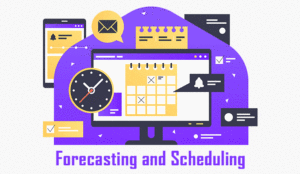Yael Stanger Sonsino at NICE explains how to master quality management on digital channels with seven tips you need to know.
In today’s omnichannel landscape, customers expect a seamless and personalized journey across email, chat, social media and voice interactions.
Organizations must embrace effective quality management practices on their digital channels to meet these expectations and ensure high-quality interaction handling.
One of the main challenges in modern quality management is integrating multiple digital channels seamlessly to create a unified, consistent and personalized customer experience.
Adapting and synchronizing each channel—with its unique requirements, functionalities and limitations—is a complex task that requires careful planning, coordination and technical expertise.
Implementing such an omnichannel approach involves comprehensively transforming the organization’s digital infrastructure, operational procedures and customer engagement strategies.
We know the process may take effort and cannot be achieved overnight. But there are still steps you can take right now to keep you on track to digital channel quality assurance and better CX:
1. Define Customer-Centric Quality Metrics:
Traditional metrics such as average handling time (AHT) may not fully capture the complexity of digital interactions. Instead, consider metrics that provide insights into the quality of service from the customer’s perspective.
This can include first contact resolution (FCR), customer satisfaction (CSAT), response time, resolution time, customer effort, the percentage of handovers between unattended self-service channels to attended contact centre channels, and the like.
2. Identify Key Customer Touchpoints:
Analyze your customer journey and identify the most critical touchpoints across digital channels. For example, an online food delivery service with a large customer base using its mobile app would focus on enhancing or adding features on the app for things like real-time order updates, menu information improvements, and direct communication with the support team.
That way, businesses can strategically allocate resources and implement improvements to enhance customer satisfaction, optimize processes and drive overall quality in the contact centre.
3. Seamless Channel Transitions:
Access to a customer’s complete interaction history empowers agents with valuable data, boosting confidence and improving quality management.
Agents can provide personalized support by understanding customer needs, preferences, and past interactions, leading to more effective solutions.
Equip agents with this data to enhance customer interactions, strengthen relationships and drive overall quality management in the contact centre.
4. Unified Customer Profiles:
When customer data is scattered across various systems, it can lead to inconsistencies or gaps in the information available to customer service representatives.
Start consolidating customer data from various channels into a central repository, providing a holistic view of the customer and leading to more informed and consistent interactions.
To this end, you’ll need to develop a roadmap for gradually migrating and integrating the data. Even if you can’t achieve complete integration immediately, aim for a unified customer profile that captures vital information such as contact details, previous interactions, and preferences.
5. Personalize the Customer Experience:
Use data and insights from digital interactions to customize the customer experience based on preferences, previous interactions and specific needs.
Implement personalized recommendations, targeted messaging, and customized support to enhance satisfaction and loyalty.
Collect and analyze feedback to identify areas for improvement and address concerns, refining digital interactions for an enhanced overall experience.
6. Provide Continuous Coaching and Development:
Continuous coaching and development programs are critical components of quality management in the contact centre, with an emphasis on ongoing improvements and efficiency. Agents can enhance their skills and stay up to date with the evolving digital landscape.
This includes improving technical proficiency and communication abilities, and deepening knowledge of digital channels, industry trends and best practices.
Invest in agent growth and ensure they are well-equipped with the necessary tools and knowledge to excel in digital interactions, which will lead to improved customer satisfaction, greater efficiency and overall quality in the contact centre.
7. Leverage Artificial Intelligence (AI) and Automation:
AI and automation optimizes agent effectiveness and performance, improving quality management in the contact centre.
AI provides near-real-time insights into customer behavior, enhancing interactions, while chatbots handle routine queries, freeing up agents for specialized tasks.
Integrate automation to support your agents with streamlined processes, reduced errors and cross-channel consistency, for efficient delivery of high-quality service.
How a Platform Can Help You
A recording platform enables contact centres to capture, manage and analyze customer communications effectively across different channels (voice or digital) and contact points (agents, bots, IVR, etc.).
It delivers end-to-end insights into the customer journey, as well as a unified user experience setting recording policies and creating reports.
Features like on-demand and automatic recording, stereo recording for enhanced analysis, and integration with CRM systems for enriched interaction metadata provide contact centres valuable information on agent activities, business app usage and regulatory compliance.
It also extends its capabilities to digital interactions, allowing contact centres to capture and play back transcripts, customer actions and agent screen activity, providing a comprehensive view of every interaction.
A 360-degree solution for all communication channels, streamlines quality assurance processes across voice and digital interactions. This ensures consistency in your organization, and enables comprehensive quality plans, automation, and coaching.
Your quality plans can easily shift focus to whichever channels need the most attention, with effective sampling and distribution of interactions to supervisors and evaluators. You can create evaluation forms specific to each channel or unified forms where that makes more sense. You can also leverage the results from one channel to auto-fill relevant fields in any other channel.
This blog post has been re-published by kind permission of NICE – View the Original Article
For more information about NICE - visit the NICE Website
Call Centre Helper is not responsible for the content of these guest blog posts. The opinions expressed in this article are those of the author, and do not necessarily reflect those of Call Centre Helper.
Author: NICE
Published On: 14th Aug 2023 - Last modified: 9th Dec 2024
Read more about - Guest Blogs, NICE






 NICE is a leading global enterprise software provider that enables organizations to improve customer experience and business results, ensure compliance and fight financial crime. Their mission is to help customers build and strengthen their reputation by uncovering customer insight, predicting human intent and taking the right action to improve their business.
NICE is a leading global enterprise software provider that enables organizations to improve customer experience and business results, ensure compliance and fight financial crime. Their mission is to help customers build and strengthen their reputation by uncovering customer insight, predicting human intent and taking the right action to improve their business. 











